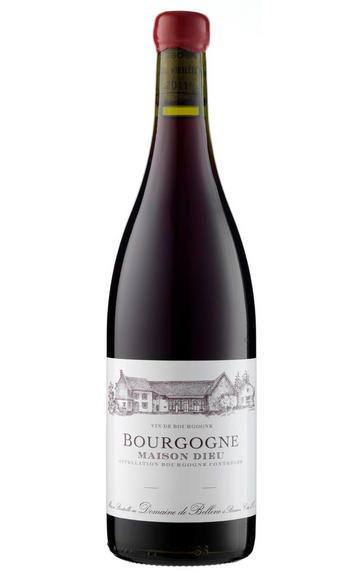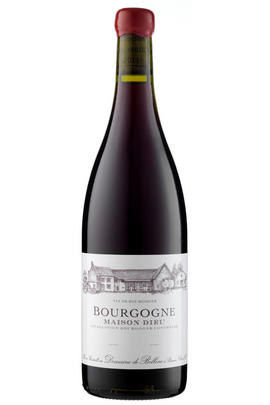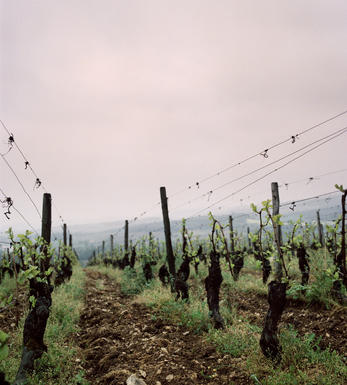
2008 Bourgogne Rouge, Maison Dieu, Vieilles Vignes, Domaine de Bellene

Critics reviews
(Tim Atkin MW, Top 20 Picks from Berrys' Summer Sale, www.timatkin.com, 14 July 2011)
The Wine Gang, www.thewinegang.com, July 2011
About this WINE

Domaine de Bellene
While running Maison Nicolas Potel in Nuits St Georges, Nicolas Potel set up his négociant company in 1997, the year after his father’s death and the sale of Domaine de la Pousse d’Or which Gérard Potel had been managing. Though his own business was taken over by the Cottin brothers of Maison Labouré-Roi in 2004, Nicolas continued to run the operation until 2009 while looking out for vineyard land of his own. In 2005 he was able to buy some vineyards (the former Domaine Carementrant, in Beaune) though the 2005 and 2006 crops were included in his négociant operation, then bottled as Domaine Nicolas Potel for 2007. The concern has been renamed Domaine de Bellene from the 2008 vintage onwards.
From the 2007 vintage Domaine Potel has been up and running in some marvellous old cellars, renovated to an ecologically admirable standard (‘Haute Qualité Environnementale'), on the Dijon road out of Beaune. Including some farming contracts, the domaine now comprises 22 hectares as below. The vineyards are being converted to organic farming, with some biodynamic elements.
Jasper Morris MW, Burgundy Wine Director and author of the award-winning Inside Burgundy comprehensive handbook.

Bourgogne Rouge
Bourgogne Rouge is the term used to apply to red wines from Burgundy that fall under the generic Bourgogne AOC, which can be produced by over 350 individual villages across the region. As with Bourgogne Blanc and Bourgogne Rosé, this is a very general appellation and thus is hard to pinpoint any specific characteristics of the wine as a whole, due to the huge variety of wines produced.
Around 4,600 acres of land across Burgundy are used to produce Bourgogne Rouge, which is around twice as much as is dedicated towards the production of generic whites.
Pinot Noir is the primary grape used in Bourgogne Rouge production, although Chardonnay, Pinot Blanc, Pinot Gris and in Yonne, César grapes are all also permitted to make up the rest of the wine. These wines tend to be focused and acidic, with the fruit less cloying than in some New World wines also made from Pinot Noir, and they develop more floral notes as they age.
Although an entry-level wine, some Bourgogne Rouges can be exquisite depending on the area and producer, and yet at a very affordable price.

Pinot Noir
Pinot Noir is probably the most frustrating, and at times infuriating, wine grape in the world. However when it is successful, it can produce some of the most sublime wines known to man. This thin-skinned grape which grows in small, tight bunches performs well on well-drained, deepish limestone based subsoils as are found on Burgundy's Côte d'Or.
Pinot Noir is more susceptible than other varieties to over cropping - concentration and varietal character disappear rapidly if yields are excessive and yields as little as 25hl/ha are the norm for some climats of the Côte d`Or.
Because of the thinness of the skins, Pinot Noir wines are lighter in colour, body and tannins. However the best wines have grip, complexity and an intensity of fruit seldom found in wine from other grapes. Young Pinot Noir can smell almost sweet, redolent with freshly crushed raspberries, cherries and redcurrants. When mature, the best wines develop a sensuous, silky mouth feel with the fruit flavours deepening and gamey "sous-bois" nuances emerging.
The best examples are still found in Burgundy, although Pinot Noir`s key role in Champagne should not be forgotten. It is grown throughout the world with notable success in the Carneros and Russian River Valley districts of California, and the Martinborough and Central Otago regions of New Zealand.


Buying options
Add to wishlist
Description
Bourgogne Rouge covers a wide range of possibilities, from inexpensive co-operative wine to hand-crafted cuvées from plots of vines in the Côte d’Or which just miss out on belonging to grander appellations. The plot called Maison Dieu, originally planted by the monks, lies just across the road from the village of Pommard.
The current vines date back to 1928 and have been farmed organically for the last decade or more. Domaine de Bellene is the name for Nicolas Potel’s own vineyard holdings from which he has been making wines separately from his merchant operation since 2007.
‘Bellene’ derives from the Roman name for the town of Beaune, and originally from the deity Belenos. Nicolas likes to vinify using a good proportion of the stems as he believes that this heightens the bouquet of the wine and adds complexity as the wine matures.
The wine offers a nose filled with earthy red fruits and exotic spices. Dry on the palate with crisp acidity and soft, rounded tannins with enough grip to match the acidity. Red cherry and raspberry are evident along with the perfumed, damp soil quality that is so often associated with Pinot Noir. The alcohol is balanced and the finish long with lovely concentration of fruit.
wine at a glance
Delivery and quality guarantee